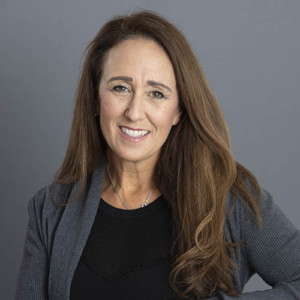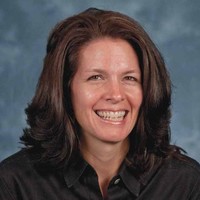#1 Name & Title: Olivia Ariss – Senior People & Culture Partner
# of Staff: 115
How long with company? 1 year
 1) What (free or paid) wellness programs or resources do you currently offer your staff?
1) What (free or paid) wellness programs or resources do you currently offer your staff?
“We offer a benefits program that covers dental, prescriptions and various practitioners. This also extends to our contract employees. We also offer a great EAP program.
Every year we have a “wellness shut down” where all of our offices close and everyone gets paid time off. It’s intended to be a black out wellness break period where no emails are exchanged. We also have an in-house social committee that put together activities focused on mental health. In the past we’ve had meditation, done yoga and this year we celebrated some days where staff had four paid days off from work to go explore things they work to protect, such as birds. This year we also developed an in-house web page called “Be Well”. It’s a website that gives all staff quick links to services, programs, general websites like CMHA etc, news, YouTube meditations, recipes, ways to spend time with family during covid and more.”
2) How and why is employee wellness important to your company?
“Wellness is quite important to all of us. Our CEO is very much about focusing on the environment but she’s excited about social justice and that everyone is receiving the treatment they deserve. Mental health is a really important focus for the organization. We have wellness check ins and the intention is to see where people are, to see if certain things would benefit them, understand what people need, etc.”
3)How have you & your team been affected by COVID-19?
“We are 99% working from home. We’re following government recommendations to go back and we feel that slower is better. Overall, our ability to transition to remote when covid hit was quite easy. Lot of our staff were already working remotely in the field and up north. The transition for us was more about socializing and still feeling connected and productive while working remotely.”
4) How has your company saved money by implementing these wellness strategies over the months (or years)?
“Most people would say wellness programs do save a company money. At the end of the day we can’t anticipate things like reduced absenteeism and presenteeism. I think it’s difficult to say exactly how much money an organization could save by having a wellness program – it’s a softer cost. But it does convert.”
5) What obstacles and challenges are you still working on?
“Mental health & wellbeing are important to us. People want to feel like they’re a part of the community. A lot of our focus has been on identifying ways people can feel connected and heard. We’ve been working on that and will be over the next year. As we come out of the pandemic, there is a lot of anxiety. A lot of flexibility has been given to staff and expectations dropped due to all of the uncertainties.”
6) In your opinion, what is the one thing that many people in your position might miss?
“One thing that someone might miss is actively engaging with other team members. In a remote world it would be so easy for someone living with mental or physical illness to hide it – nobody would know the difference. It’s really about fostering relationships to build trust. We want people to feel comfortable coming to us to chat. It’s important to engage with folks and find opportunities to reach out to them just to say hi, for example.”
7) Crystal ball: What does YOUR next level of success look like in this arena?
“When it comes to what’s next for us with wellness, it’s about finding opportunities and ways to really help staff build new behaviours so that health and wellness can remain a top priority. Even I myself will sit at my desk for 10 hours a day, every day. We need to make wellness an ongoing priority. Let’s find ways to create new habits and new plans in a more flexible work environment. Let’s make sure we don’t feel guilty taking breaks in the middle of the day that we need.”

# 2 Name: Catherine Long – Human Resources Director
Company & Location: Canadian Chamber of Commerce – Gatineau, QC
Website: www.chamber.ca
# of Staff: 50+
How long with company? 3 years
1) What (free or paid) wellness programs or resources do you currently offer your staff?
“We have quite a bit through our group benefit providers and other providers. We also have a social committee and they offer programs throughout the year – speaker series, lunch and learns, a step class, etc. Employees have the opportunity to take part.
Everyone is still working from home so we are providing more virtual programs right now. Our workforce is really busy. We’re a smaller organization who does very big things. It’s very difficult to offer something that doesn’t have the flexibility.”
2) How and why is employee wellness important to your company?
“It’s extremely important. I would say based on other companies I’ve worked for and as a general policy, we’re very progressive. We do function with our employees in mind. Joining the chamber was a breath of fresh air. We have flexible work policies and our team can work from anywhere. We also have very healthy sick day and vacation day policies. Our contract and temporary employees also have access to some of these benefits. We can advocate for staff but they have to want to use these benefits too.”
3) How have you & your team been affected by COVID-19?
“Everyone is still working from home but they go in to the office when they need to. It wasn’t a major change but it was an adjustment. We were already really well set up with many tools and ways to connect really early on. Those who really struggled were the ones who were really sociable people. I used to work out 3-5 days a week. I haven’t been able to do that. We were noticing more people being plugged in than before. We tell everyone not to work over the weekend. Having those conversations out loud with the leadership team leading by example makes a big difference.”
4) What obstacles and challenges are you still working on?
“Prioritizing ourselves. It’s a double edged sword – having employees be so invested in everything with the organization can make staff not be as invested as much in their own wellness. Take time off when you need it or take a mental health day. We encourage everyone to use one of our policies to go do something that they love, like our volunteer days where they still get paid.”
5) In your opinion, what is the one thing that many people in your position might miss?
“They might miss the opportunity to know that employees may be going through some challenges. Sometimes we overlook that people may not be comfortable speaking out about what they need. You need ways to support your employees.”
6) Crystal ball: What does YOUR next level of success look like in this arena?
“Our next level of success is to be able to not only play to people’s strengths but nurture their mental health. We’re not sure because of covid restrictions still in place but I’d like to see more resources in place. I’d like to really help employees facilitate the resources they need to achieve their wellness goals.”

#3 Name: Kim Sass – Vice President Human Resources
Company & Location: Wi-Tronix – Bolingbrook, IL
Website: www.wi-tronix.com
# of Staff: 150+
How long with company? 3.5 years
1) What (free or paid) wellness programs or resources do you currently offer your staff?
“We offer a number of wellness options. We give a discount to all staff on health premiums. Some staff pay nothing for their benefits package.
We’re really about getting people involved and engaged. Financial, spiritual, mental and emotional well-being are all important to us.
Staff can each earn up to $300 a year for the things they do – for example if they get a flu shot or visit the eye doctor. They can then use that money for things like a gym membership.
We prioritized helping our staff to get the COVID-19 vaccination and as a result of that prioritization, our team is now 85% vaccinated.
We also try to marry wellness with charitable giving – we’ve been involved with projects like “Habitat for Humanity”. We do impromptu wellness initiatives too – the other day we scheduled a yoga teacher to come by and teach us a class outside – that was nice.
We have also installed several health measures because of covid – things like filters in our HVAC system, automatic door openings where you just wave your hand to open the door, etc.”
2) How and why is employee wellness important to your company?
“Employee wellness is incredibly important to our team. If people are not well they’re not productive, engaged, creative or innovative. We firmly believe that employee wellness is of the utmost importance AND having a team that’s healthy can actually save your company money too.”
3) In your opinion, what is the one thing that many people in your position might miss?
“We do a lot of pulse surveys – we check in with people to see how they’re doing. We ask them ‘Is this working for you? Is this something you want and need? Is this something you want to do?’ We don’t worry about engagement; instead we talk to our team openly and honestly and we just ask them what they want and need. Just talk to your people – this is so important.”
4) Crystal ball: What does YOUR next level of success look like in this arena?
“Mental wellness is very important to us, and this will continue to be a priority here at Wi-Tronix. We also want to focus more on education, information and things like ergonomics.”

#4 Name: Carlos Corcelles – Vice President of Human Resources
Company: Antunes – Chicago, IL
Website: www.antunes.com
# of Staff: 350
How long with company? Almost 11 years
1) How and why is employee wellness important to your company?
“Here at Antunes, we care very much about our people. One of the key areas that we really focus on is employee health and wellness – we invest a lot of time, money and energy into wellness for our team. When people feel healthy and happy, they are more engaged. When you promote wellness in an organization, you have a healthy environment and you get a return on your investment. People come together more and they are more apt to show their passion. We are always striving to be better in this area.”
2) How and why is saving money important to you & your company?
“Our company is obviously here to make money – and part of increasing our profits is to make sure we operate efficiently. By investing in employee wellness you eliminate the cost associated with having unwell employees. You get a return on your investment. There is a high cost associated with medical claims.”
3) What wellness programs or resources do you currently offer your staff?
“We have a gym and before COVID-19, we offered group classes for weight loss, stretching, individual personal training, Zumba and more. We try to include everyone, not just the office staff. We have the production staff stretch before starting their shifts. We’ve also partnered with a health clinic that we have on-site. We offer things here like biometric results, blood pressure, blood work, they assess risk factors for diabetes, etc, as well as give recommendations for exercise for people.
4) Crystal ball: What does YOUR next level of success look like in this arena?
“We want to increase participation in the programs we currently offer and we want to create and offer more programs. People can really benefits from guided activities like yoga and fitness.”

#5 Name: Julie Baker – VP HR
Company & Location: American Hotel Registry Company – Chicago
Website: https://www.americanhotel.com/
# of Staff:
How long with company? 6.5 years
1) What (free or paid) wellness programs or resources do you currently offer your staff?
“We look at wellness in a variety of ways, like health, mental health, financial etc. Things are different now that we are remote. Even in a remote world, we’re doing virtual fitness classes like yoga and tabata. We have weight loss contests, walking/step contests. In the past, we’ve done mindfulness contests. We currently have ping pong tournaments to get busy and active and have fun. When we were in the same building, an on-site nurse provided advice and support for varying health issues. We have a quarterly wellness newsletter. We do a wellness credit for anyone who gets an annual physical.”
2) How and why is employee wellness important to your company?
“We are a family owned company, 155 years. With family ownership, it’s a different mindset. We want to make sure we’re well and healthy and living our best lives. We want to be sure employees are taking care of themselves and their families. We have fun together and we work hard together.”
3) How has your company saved money by implementing these wellness strategies over the months (or years etc)?
“We have seen a direct ROI on our wellness investments. When you’re encouraging people to be healthy and well, it’s going to translate into a healthier popular. I do believe we’re seen the ROI on that.”
4) What obstacles and challenges are you still working on?
“I think it’s always a challenge – how do you make sure it stays front and center with people and how do you make sure they continue these wellness initiatives. How do you keep it in front of people and getting everyone engaged? It’s a little harder in this virtual world but still doable.”
5) In your opinion, what is the one thing that many people in your position might miss?
“We used to put programs out there and not always get the participation. We then started a wellness committee that was run by employees. The staff put their own interests into programs and started things on their own. Participation went up and the biggest lesson I learned is you have to go back to the people and figure out what they want.”
6) Crystal ball: What does YOUR next level of success look like in this arena?
“I think that when we have more people back in the office, we need to get back to some of our programs and reinstate them. We want to have more of a mental focus. We do some of that like paid time off for volunteering, but it’s hard to do those things right now due to covid. We haven’t been able to put those things into place yet.”
